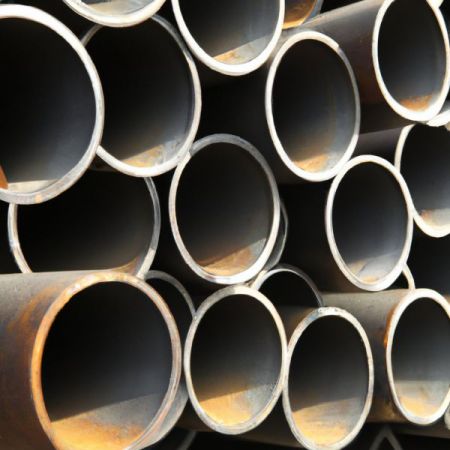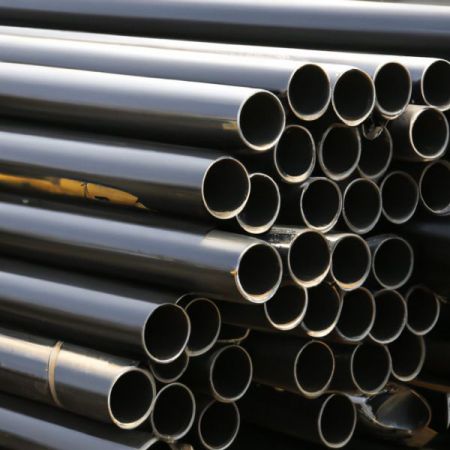ERW (Electric Resistance Welded) and EFW (Electric Fusion Welded) steel pipes are two commonly used types of steel pipes in various industries. While they may sound similar, there are distinct differences between the two.
ERW steel pipes are manufactured by rolling metal sheets and then welding them longitudinally using electric resistance. This process creates a strong bond between the sheets, resulting in a seamless and continuous pipe. ERW pipes are known for their high dimensional accuracy and uniformity, making them suitable for various applications such as oil and gas transportation, structural support, and plumbing.
EFW steel pipe is the abbreviation of electric fusion welding
EFW steel pipes are made by welding a plate or strip of steel across the longitudinal seam under high heat generated by an electric arc. This fusion welding process ensures a strong joint between the edges of the strip or plate, leading to a sturdy pipe with enhanced mechanical properties. EFW pipes are often used in industries that require corrosion resistance, such as chemical processing plants and power generation facilities.
When it comes to specifications, ERW steel pipes typically have a smaller diameter range compared to EFW pipes. ERW pipes usually range from 1/2 inch to 24 inches in diameter, while EFW pipes can be manufactured in larger sizes up to 100 inches or more.
In summary, while both ERW and EFW steel pipes serve important roles in various industries, their manufacturing processes and specifications set them apart. Understanding these differences can help professionals choose the right type of pipe for their specific application requirements.


ERW steel pipes EFW steel pipes
●manufacturing process difference
Firstly, let's discuss the manufacturing process. ERW steel pipes are made by rolling a flat sheet of steel into a cylindrical shape and then welding the seam using electric resistance. On the other hand, EFW steel pipes are created by melting a plate or strip of steel and then forming it into a cylindrical shape through fusion welding.
●Specification difference
One key difference lies in the specification requirements. ERW pipes have stricter dimensional tolerances compared to EFW pipes. This means that ERW pipes have more precise measurements and can be manufactured with smaller diameters. EFW pipes, on the other hand, tend to have larger diameters due to their manufacturing process.
●heat treatment difference
Another important aspect is heat treatment. ERW pipes do not require any heat treatment after welding as they undergo high-frequency induction heating during manufacturing which results in localized heating at weld lines. In contrast, EFW pipes may undergo post-weld heat treatment depending on specific requirements or standards.
●Pressure welding difference
Pressure welding is also worth mentioning as it differs between these two types of steel pipes. ERW pipe joints are typically stronger due to their solid-state bonding achieved through resistance heating without adding any filler material. In contrast, EFW pipe joints rely on fusion welding which involves adding filler material during the welding process.
●weld lines difference
Lastly, let's consider weld lines. In ERW pipes, visible weld lines can be seen along the length of the pipe due to the seam created during manufacturing. On the other hand, EFW pipes have a smoother internal and external surface without visible weld lines since they are created through fusion welding.
In summary, while both ERW and EFW steel pipes serve various purposes in different industries, they differ in terms of manufacturing process, dimensional tolerances, heat treatment requirements, pressure welding techniques, and the presence of visible weld lines. Understanding these differences will help in selecting the appropriate type of steel pipe for specific applications.